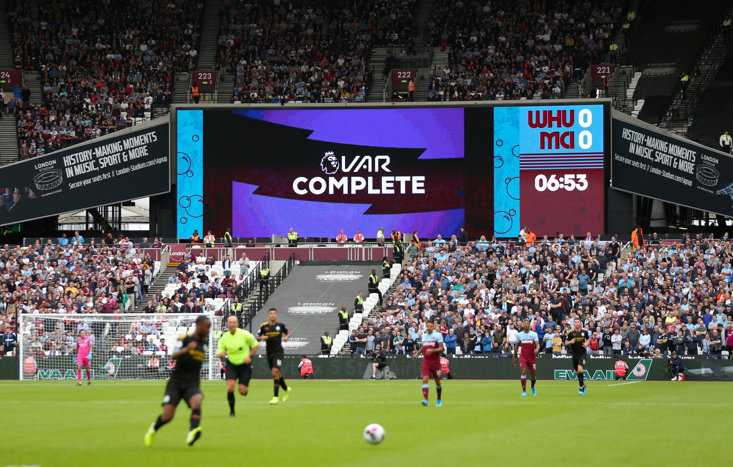If video technology has enhanced rugby league for 27 years, how has it managed to ruin football in just four?
This week’s shambolic VAR calamity at Tottenham humiliated the officials involved as much as it turned the momentum of the game against the unfortunate recipients Liverpool. It brought the Premier League to its lowest ebb since welcoming video assistance to the game in 2019.
Now the Betfred Super League is far from perfect.
But video technology has been quietly and progressively helping its referees get things right since 1996. While the Premier League has simply overseen a VAR crash in a fraction of that time.
The most common agreement in any debate on this theme - let’s call them VARguments - is that technology is not the problem, but the way it is used is. This was graphically illustrated in the content of the painful audio file from Spurs.
So how can rugby league help the Premier League?
Well first things first the Professional Game Match Officials Board are in good hands with former Super League ref Phil Bentham on the books as VAR coach.
I also spoke to two leading current Super League referees this week to gain their insight on what works and what doesn’t.

Interference
The video assistance in rugby league has only ever been there to give the on-field officials extra eyes. As one top ref told me this week “the video ref is not there to re-ref the game but can assist on unseen incidents with multiple replays”. This works well with foul play that the ref has not seen, other than that generally only tries are checked “upstairs” with the video.
Football seems to have paid the price - despite its claims of “minimum interference, maximum benefit” - of actually doing the opposite.
Slow mos, freeze frames and pain-staking geometry have stripped the game of its soul.
Authority
The referee needs to retain maximum authority despite the video safety net now available. In football this appears to have been lost, with refs erring on the side of caution knowing any errors can be corrected. Very few ultimately stand by their original decisions when consulting the video replay pitchside. Has their authority been irreparably damaged by VAR and its misuse?
In rugby league the video ref has to prove the on-field decision wrong, yet admittedly this is a growing cause of debate too. If a ref has awarded a try and asked for it to be checked, the video ref has to find a clear reason to disallow, rather than suggesting a correct decision. If there is no clear video angle available, the on-field decision has to stand whether it appears dubious or not.
Evolution
The VAR side of rugby league looks much different now to when it was introduced with Super League in 1996.
But because it has been part of the game for so long - league was one of sport’s trailblazers in this respect - no current referees have ever known any different. The issue the Premier League has is that its officials are effectively learning new skills on the job in the unforgiving gaze of a global audience that devours its product. And it is a bloody hard job to start with.
Drawbacks
As stated, league isn’t perfect. Only next season will every game have a video ref which has oft led to unrest about an unlevel playing field for those teams not on TV as much.
Not everything is checkable by the video ref. Forward passes for example are not, which can be agonising when clear forward passes are evident in the replays shown after a try. Brisbane got away with a couple of outrageous forward passes in their NRL semi-final.
There have been big errors too - Jordan Tansey scored Leeds a Magic Weekend derby win over Bradford in 2007 that should never have been allowed - so perhaps one major concession here is that league remains a minority sport and as such can evolve from its errors away from the unforgiving gaze that football commands.
Football has scored its ugliest own goal of the VAR era in the past seven days.
But by placing greater emphasis on communication and transparency it can finally get it right. With a little help from rugby league.